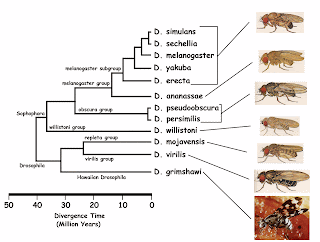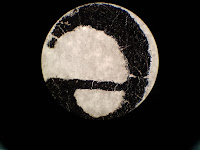How are you? :)
In this week, I'm really busy in the lab and because of that, I couldn't write what we've done in the lab, yet. Yesterday, we made Nuclear Fractionation to some Bacteria to use their proteins and today, to separate the proteins by using Western Blot Technique! It is a very long process and to follow truly, I read an article about the technique. At the weekend, maybe I can share a post about the Nuclear Fractionation Protocol that we used and an other post about Western Blotting :)
However, because I cannot write these posts before the whole process ends, today I will share my lab report about cellular fractionation by using homogenization technique. I think, it can be useful to read before reading the Nuclear Fractionation Protocol :)
Here it is :)
INTRODUCTION:
Centrifuge is a laboratory machine which is
used for separating and isolating different substances from each other by using
a motor which is able to spin the substances which are in liquid phase, at high
speed. Differential Centrifugation is also one of the techniques for separating
certain organelles from the cells by using their size and density differences.
Centrifuge machines have different types
of rotors such as swinging bucket and fixed angle rotors. Swinging-bucket
rotors can swing the sample tubes into a horizontal plane during the
centrifugation process. On the contrary, fixed-angle rotors have a particular
angle to fix the tubes during the centrifugation.To
explain the properties of centrifuge machines, there are RPM and RCF values.
RPM (Revolution per Minute) value shows the speed of the revolution that the
rotor of the machine can reach and it is independent of the size of the rotor.
However, RCF ( Relative Centrifugal Force) is the value of the force which is
exerted on the samples in the rotor as a result of the revolution of the rotor
and its value depends on the size of the rotor.
At the end of the centrifugation process,
the substances in the tube separate from each other according to their sizes
and densities. The smaller and less dense components move to the top of the
tube and are called “supernatant”, and the larger and more dense components
move to the bottom and are called “pellet”. During the cellular fractionation,
densities and sizes of the needed components and environmental factors such as
temperature and pressure have to be considered to obtain true and utilizable
components from the sample.
The centrifugation process and its results
are affected by different properties such as RCF value, the duration of
centrifugation, the shapes, sizes and densities of the cell samples, the density
and the viscosity of the medium solution and, the column of suspension’s length.
It is needed to be careful about the balance of the samples in the rotors and
the lids of the tubes and the centrifuge have to be closed carefully and, until
the centrifuge reaches the maximum speed, the samples shouldn’t be left.
AIM:
The aim of the experiment was to obtain
mitochondria of the liver cells by using centrifugation technique.
METHODS:
1.
Homogenization:
·
From an ice bucket, 1gr
rat liver in a 50ml centrifuge tube was taken.
·
10ml of 0.25M sucrose
solution was added in the tube.
·
By using homogenizer, a
colloidal mixture of the rat liver and sucrose solution was prepared.
·
The homogenizer was used
until there wasn’t any apparent liver piece in the tube.
2.
First
Centrifugation:
·
A Table Top Centrifuge
(swinging bucket) with RCF = 800g and RPM= 2037 values was used in the first
centrifugation.
·
The centrifuge was
arranged before the experiment to 4oC.
·
The 50ml falcon with 10ml
mixture of liver and sucrose solution was placed in the rotor of centrifuge.
·
To balance the rotor
during the process, the samples in the falcons were placed just opposite sides
of each other.
·
The centrifuge was
activated.
·
The machine was waited
until it reached the maximum speed.
·
After 5 minutes, the
sample was taken from the machine and it was observed that the pallet was at
the bottom and the supernatant was at the top of the falcon.
·
The supernatant part of
the sample was poured into a 15ml centrifuge tube to be used in the second
centrifugation.
·
The pallet wasn’t used.
3.
Second
Centrifugation:
·
To centrifuge at a higher
speed, a High-Speed Centrifuge (fixed-angle) was used.
·
To determine the true RPM
value that corresponds the needed RCF value, the instruction manual of the
centrifuge was used.
·
To get the RCF = 5000g
value, RPM = 5500 was calibrated on the machine.
·
To prepare a proper 15ml
falcon with sucrose solution for balancing the sample in the rotor, the scales
was used.
·
The centrifuge was
arranged before the experiment to 4oC.
·
The adaptors with falcons
were placed in the centrifuge and the lid was closed.
·
The centrifuge was
activated.
·
The machine was waited
until it reached the maximum speed.
·
After 15 minutes, the
sample was taken from the machine and it was observed that the pallet was
placed on the wall of the tube.
·
The supernatant was
poured into a new 15ml falcon without taking the pellet to be used in the third
centrifugation
·
The pallet wasn’t used.
4.
Third
Centrifugation:
·
To centrifuge at a high
speed, a High-Speed Centrifuge (fixed-angle) was used.
·
To determine the true RPM
value that corresponds the needed RCF value, the instruction manual of the
centrifuge was used.
·
To get the RCF = 24000g
value, RPM = 12500 was calibrated on the machine.
·
To prepare a proper 15ml
falcon with sucrose solution for balancing the sample in the rotor, the scales
was used.
·
The centrifuge was
arranged before the experiment to 4oC.
·
The adaptors with falcons
were placed in the centrifuge and the lid was closed.
·
The centrifuge was
activated.
·
The machine was waited
until it reached the maximum speed.
·
After 15 minutes, the
sample was taken from the machine and it was observed that the pallet was
placed on the wall of the tube.
·
The supernatant was taken
by using 5ml serological maxipipette without touching the pellet.
·
The supernatant wasn’t
used.
·
Into the falcon with the
pellet, 5ml of 0.25M sucrose solution was added.
·
The vertex was used to
resuspend the mitochondrial pallet.
Mitochondrial suspension was obtained.
DISCUSION:
The aim of this experiment was to obtain
mitochondria of the liver cells for using them in different researches by using
centrifugation technique. For this purpose, firstly the liver tissue was
homogenized in 10ml of 0.25M sucrose solution. After that, three different
centrifugation processes were performed and at the end of the experiment, the
mitochondria of liver cells were obtained as the pellet.
For cellular fractionation, liver tissue
was chosen because liver cells have more mitochondria than other tissues.
Because of their work in the body, these cells require more energy than other
cells and as a result, in their cytoplasm there are a lot of mitochondria to
produce energy.
To perform the centrifugation processes
truly, a proper solution for the sample was used. 0.25M sucrose solution was chosen
to be used for this experiment, because it is an isotonic and dense solution.
In addition to that, sucrose is a covalent molecule and it doesn’t dissolve
ionically in a solution. On the other hand, sucrose molecules have a resolving
effect for the other molecules in the sample and as a result they help to
separate the compounds of sample, too.
All steps of this experiment were carried
out in relatively lower temperatures because, the proteins and protein based
structures in the liver cells and their components such as organelles and
enzymes could be affected by high temperatures. As a result, these proteins and
protein based structures could be denaturated and nonutilizable in the room
temperature.
Because of that, the liver tissue was kept in an ice bucket and the centrifuges
were optimized at 4oC during the centrifugation processes.
On the other hand, to determine the true
RPM value for the centrifuge, the instruction manual was used. The instruction
manual shows the true RPM value for the needed RCF value and it was for
RCF=24000, RPM = 12500. After the centrifugation, by using the formula to
convert the RCF value to RPM value, the needed RPM value was calculated
mathematically, too. The result was almost the same = 12552.
By
using cellular fractionation, it is not possible to obtain a complete pure
organelle solution. Because this method based on size and density differences
and during the centrifugation process, the compounds of the cells could not be
separated accurately, especially in this short time interval. Because of that,
to obtain purer results the methods which can target the needed component
directly can be used, such as antibodies and magnetic beads to separate the
components.
I hope, you've had a perfect and productive week and you will have an amazing weekend at the end :)
See you soon..
LOVE YOU <3
Kumsal



















